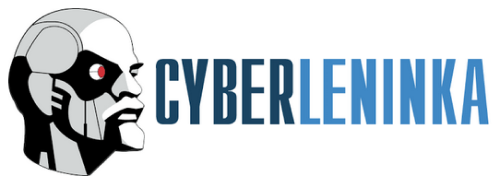Yermakov Vladimir P.
ARTICLES:
POSSIBILITIES OF USE OF CERAMIC MATERIALS IN POWER- AND RESOURCE-SAVING
Computational Nanotechnology — Issue №1 2016: 35-39
RECOURCE SAVING AND ENERGY EFFICIENT TECHNOLOGY OF THE PRODUCTION ALUMINA FROM SECONDARY KAOLIN WITH ANGREN DEPOSI
Computational Nanotechnology — Issue №1 2016: 45-51
Features of synthesis of functional ceramics with a complex of the set properties by a radiation method. Part 3
Computational Nanotechnology — Issue №2 2016: 66-76
Features of synthesis of functional ceramics with a complex of the set properties by a radiation method. Part 4
Computational Nanotechnology — Issue №2 2016: 77-80
Features of synthesis of functional ceramics with a complex of the set properties by a radiation method. Part 5. Mechanism of generation of impulses functional ceramics
Computational Nanotechnology — Issue №2 2016: 81-93
Possibility of use of functional ceramics for synthesis of complex connections
Computational Nanotechnology — Issue №2 2016: 129-131
PART 6. FEATURES OF SYNTHESIS OF FUNCTIONAL CERAMICS WITH A COMPLEX OF THE SET PROPERTIES BY A RADIATION METHOD
Computational Nanotechnology — Issue №3 2016: 6-34
SAFETY OF STORAGE OF SULFURIC ACID
Computational Nanotechnology — Issue №3 2016: 183-195
PART 2. SAFETY OF STORAGE OF SULFURIC ACID
Computational Nanotechnology — Issue №2 2017: 62-79
THE FREQUENCY CHARACTERISTIC OF THE OSCILLATOR RESONANT OSCILLATIONS
Computational Nanotechnology — Issue №4 2017: 6-13
PHONON MECHANISM OF TRANSFORMATION IN CERAMIC MATERIALS
Computational Nanotechnology — Issue №4 2017: 21-35
DETERMINATION OF THE MAXIMUM EMISSIVITY CERAMIC DEPENDING ON THE CONCENTRATION OF THE BINDER
Computational Nanotechnology — Issue №4 2017: 36-40
APPLICATION OF FUNCTIONAL CERAMICS FOR DRYING THE PAINT, POLYMERIZATION OF HIGH-MOLECULAR COMPOUNDS AND VULCANIZATION OF RUBBERS
Computational Nanotechnology — Issue №4 2017: 60-62
COMPARATIVE FREQUENCY CHARACTERISTICS OF VIBRATIONS GENERATED BY THE FUNCTIONAL CERAMICS AND CAVITATION GENERATOR
Computational Nanotechnology — Issue №4 2018: 57-70
STUDY OF THE INFLUENCE OF THE SPECTRAL COMPOSITION OF IR RADIATION ON THE SEDIMENTATION RATE OF COMPLEX COMPOUNDS
Computational Nanotechnology — Issue №3 2019: 96-99
PROSPECTS OF APPLICATION OF POLYMER-CERAMIC COMPOSITE IN THE PRODUCTION OF MICROALGAE
Computational Nanotechnology — Issue №4 2019: 44-48
Endangered health - opportunity with efficient innovations
Computational Nanotechnology — Issue №1 2020: 11-18
Application of functional ceramics in sterilization processes
Computational Nanotechnology — Issue №1 2021: 84-94
Prospects for Wide Application of IR.C Technology in Germany
Economic Problems and Legal Practice — Issue №6 2021: 279-284
Capabilities of Polyethylene-ceramic Composite in Comparison with Polyethylene Film in Real Operation Conditions
Computational Nanotechnology — Issue №2 2022: 67-72
Development of a Method for Obtaining Ceramic Nanocomposites Using Sol-gel Technology Elements to Create Inclusions of Amorphous Phases with a Composition Similar to the Target Crystalline Ceramic Matrix
Computational Nanotechnology — Issue №3 2022: 60-67
Prospects for the Use of Film-Ceramic Photocatalysts for the Cultivation of Microalgae
Computational Nanotechnology — Issue №2 2023: 60-69
Prospects of Solar Energy: The Role of Modern Solar Technologies in the Production of Hydrogen
Computational Nanotechnology — Issue №3 2023: 11-25
Investigation of the Properties of Functional Ceramics Synthetized by the Modified Carbonate Method
Computational Nanotechnology — Issue №3 2023: 130-143
New Approaches to the Synthesis of Functional Materials with Specified Properties under the Influence of Concentrated Radiation and Pulse Tunnel Effect
Computational Nanotechnology — Issue №1 2024: 214-223
Productive Methods for Increasing the Efficiency of Intermediate Reactions in the Synthesis of Functional Ceramics
Computational Nanotechnology — Issue №1 2024: 224-234









